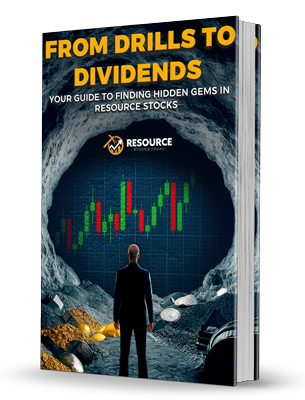Rio Tinto’s Share Price Increases 10% in a Week: How to Play It?
The Rio Tinto Group (RIO) has recently experienced a notable surge in its share price, rising 10.3% in just one week. This gain not only beats the industry’s 9.7% rise but also surpasses the Basic Materials sector’s 4.9% return. Meanwhile, the S&P 500 index has moved up a mere 0.4% within the same time frame. This recent uptick in RIO’s stock can be largely attributed to China’s announcement of its most substantial stimulus package since the COVID-19 pandemic, aimed at reviving its economic growth to achieve a target of 5% for 2024. Such measures have revived iron ore prices from a prolonged slump due to weaker demand in China, alongside boosting copper prices on improved demand prospects.
Rio Tinto’s Performance Versus the Broader Market
Analyzing the technical aspects of RIO, the stock has recently crossed critical levels, notably its 200-day simple moving average (SMA), signaling a long-term positive trend. Presently, RIO is trading above both its 50-day and 200-day moving averages, indicative of a strong market perception and investor confidence concerning RIO’s growth prospects. As of last Friday, RIO shares closed at $71.23, remaining 5.1% shy of the 52-week high of $75.09 that was reached on December 28, 2023. Investors are now faced with the question of whether to enter the market or wait for a potentially better entry point.
Fundamentals Underpinning RIO’s Share Price Surge
A closer look at RIO’s fundamentals reveals a robust balance sheet, positioning the company favorably to invest in growth while delivering returns to shareholders. The company maintains a total debt-to-total capital ratio of 0.20, which is lower than the industry average of 0.26. This financial flexibility allows Rio Tinto to allocate around $10 billion for capital expenditure annually, with a focus on ongoing projects, high-return replacement ventures, and initiatives geared towards decarbonization. Significant growth capital expenditure is expected to be around $3 billion per annum.
Rio Tinto boasts a strong project portfolio with operations across 18 countries and spanning eight commodities. Key projects include Simandou (iron ore) and Oyu Tolgoi (copper), which are set to commence iron ore production by late 2025 and ramp up to deliver 500 kilotons per annum of copper from 2028 to 2036, respectively. Additionally, RIO plans to enhance its mid-term capacity in the Pilbara region to 345 to 360 million tons per annum, contingent on the successful delivery of new replacement mines.
Sustainability and Strategic Investments
A critical focus for RIO is its commitment to decarbonization. The company is implementing pioneering technologies such as the carbon-free aluminum smelting cells using ELYSIS technology at its Arvida smelter in Quebec. These initiatives underscore Rio Tinto’s dedication to reducing its carbon footprint and securing its future in the transition to cleaner energy. Furthermore, the acquisition of the Rincon lithium project in Argentina positions the company strategically within the lithium market, which remains vital for energy transition efforts.
Commodity Price Outlook Favorable for RIO
The rebound in commodity prices, particularly iron ore and copper, is positive for Rio Tinto, which has faced significant declines earlier in 2024 due to weakened demand in China. However, China’s economic stimulus measures have catalyzed recovery, with current iron ore prices hovering around $93 per ton and copper prices witnessing a year-to-date increase of 17.34%.
Attractive Dividend Yield and Returns
In addition to its growth initiatives, RIO offers an attractive dividend yield of 4.96%, significantly higher than the industry average of 3.40%. The company declared $2.9 billion in dividends for the first half of 2024, achieving a 50% payout ratio. Furthermore, RIO’s Return on Equity (ROE) stands at 20.86%, outperforming many peers within the mining sector.
Valuation Metrics
Despite its recent performance, RIO’s valuation remains enticing, trading at a forward price-to-earnings ratio of 9.78, which is below the industry’s average of 13.39. This positions RIO favorably among its peers, making it an appealing choice for investors seeking value.
Near-Term Challenges
However, potential investors should remain cautious. Near-term concerns include a revised copper production outlook for 2024, potentially falling near the lower end of the 660-720 kilotons range due to reworked mine plans at Kennecott, thus impacting earnings estimates. Furthermore, iron ore shipments are expected to dip 0.4%, and alumina production forecasts have also been adjusted downward due to operational challenges.
Conclusion: Hold on to RIO Stock
Considering the recent uptick in commodity prices, the stock’s strong fundamentals, and its projected long-term growth trajectory, RIO remains a compelling investment. However, given the subdued production guidance and inflationary pressures facing the company, it may be prudent to hold existing positions while awaiting a more advantageous entry point for new investments. In the long term, investors can benefit from RIO’s solid project portfolio and the overall positive outlook for commodity prices.















